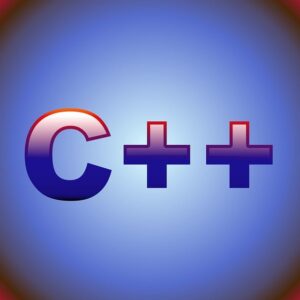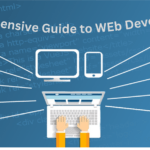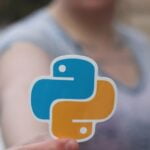A Comprehensive Guide to the Python Programming Language

Introduction
Brief Overview of Python
Python is a flexible, high-level programming language known for its readability and simplicity. Its natural language-like syntax makes learning and application easier, making it a popular option for both novices and specialists. Python’s ability to support a broad range of programming paradigms, including procedural, object-oriented, and functional programming, adds to its worldwide popularity.
Historical Context and Evolution
Python, created by Guido van Rossum in the late 1980s, was intended to replace the ABC language. Since its official introduction in 1991, Python has evolved significantly, resulting in the powerful Python 3.x version we use today. Python’s evolution from a passion project to one of the world’s most popular languages is characterized by continuous improvement and community-driven development.
Relevance in Modern Programming
Python’s versatility across several disciplines, from web development to scientific computing, highlights its significance in modern programming. Python’s vast libraries and frameworks assure its continued popularity among developers. Python is used in a variety of industries, including banking and artificial intelligence, because to its simplicity and efficiency, confirming its place as a key tool in the contemporary programmer’s toolset.
Python’s Design Philosophy
Emphasis on Readability
Python’s syntax emphasizes readability, helping developers to create clear, logical code for both small and big projects. This feature minimizes psychological pressure on programmers, hence increasing productivity. Python’s use of capitalization to denote code blocks differs significantly from other languages, which utilize braces or keywords, resulting in cleaner, more readable code.
Simplicity and Elegance
Python’s architecture follows the concept of simplicity and aesthetics. The language reduces needless complexity, allowing developers to concentrate on problem solution rather than syntactic details. This concept guarantees that Python code is not only easy to produce, but also to understand and maintain, encouraging a collaborative atmosphere in which developers can work together smoothly.
The Zen of Python
The Zen of Python, a collection of aphorisms, encapsulates the language’s philosophy. Phrases like “Simple is better than complex” and “Readability counts” guide Python’s design and usage. This collection, accessible by typing import this in a Python interpreter, serves as a philosophical guide for writing clean, maintainable code.
Core Features of Python
Dynamic Typing
Python’s dynamic typing system assigns data types at runtime, offering flexibility in coding. This feature simplifies code but requires careful management to avoid type-related errors. Unlike statically typed languages where variables must be declared with a type, Python’s dynamic typing allows for rapid development and prototyping.
Interpreted Language
As an interpreted language, Python executes code line-by-line, which aids in debugging and development. This feature contrasts with compiled languages that translate code into machine language before execution. The immediate feedback from the interpreter makes Python an excellent choice for scripting and rapid application development.
High-Level Language
Python’s high-level syntax isolates intricate details, allowing developers to concentrate on essential functionality. This abstraction streamlines the development process, particularly for complicated applications. Developers do not need to handle memory allocation or comprehend low-level procedures, so they may focus on higher-level challenges.
Extensive Standard Library
Python’s extensive standard library includes modules and methods for a variety of activities, ranging from file processing to network protocols. This library removes the requirement for external dependencies, which simplifies development. The standard library, sometimes known as “batteries included,” guarantees that developers have access to critical tools straight out the box.
Setting Up Python
Installation Process
Installing Python is straightforward. Users can download the installer from the official Python website, ensuring compatibility with their operating system. Following the installation wizard sets up Python seamlessly. On Unix-like systems, Python is often pre-installed, making the setup process even simpler.
Setting Up IDEs and Text Editors
Integrated Development Environments (IDEs) like PyCharm and VSCode enhance Python development with features like syntax highlighting and debugging tools. Text editors like Sublime Text and Atom offer lightweight alternatives. The choice of IDE or text editor can significantly impact productivity, with advanced IDEs providing powerful tools for large projects.
Virtual Environments
Virtual environments allow developers to manage dependencies for different projects, preventing conflicts. Tools like venv and virtualenv create isolated environments, ensuring project-specific dependencies. This isolation is crucial for maintaining consistent environments across development, testing, and production stages.
Python Syntax and Semantics
Variables and Data Types
Python allows a variety of data types, including integers, floats, texts, and booleans. Variables are dynamically typed, which allows for more freedom when assigning values. Python’s built-in functions and the ability to define new data types provide you complete control over data management and manipulation.
Control Structures
Python’s control structures, such as if-else statements and loops, facilitate flow control. Indentation defines code blocks, reinforcing Python’s emphasis on readability. Control structures are essential for directing the execution flow, enabling complex decision-making processes within programs.
Functions and Modules
Functions in Python encapsulate reusable code blocks. Modules allow developers to organize functions, classes, and variables, promoting modularity and maintainability. Python’s modular approach encourages the development of reusable, organized code, which can be easily shared and maintained.
Error Handling and Exceptions
Python handles errors using try-except blocks, enabling robust error management. This feature ensures programs can gracefully handle unexpected conditions without crashing. Effective error handling is crucial for developing resilient applications that can manage and recover from runtime anomalies.
Python Data Structures
Lists
Lists are mutable, ordered collections of elements. They support various operations, including indexing, slicing, and appending, making them versatile for data manipulation. Lists are foundational data structures in Python, enabling dynamic and efficient data storage and retrieval.
Tuples
Tuples are immutable, ordered collections. Their immutability ensures data integrity, making tuples ideal for fixed collections of elements. Tuples are used when the data set is not supposed to change, providing a measure of protection against unintended modifications.
Dictionaries
Dictionaries store key-value pairs, enabling efficient data retrieval. Their flexibility allows for dynamic data storage, making dictionaries suitable for various applications. Dictionaries are optimized for fast lookups, making them ideal for implementing mappings and associative arrays.
Sets
Sets are unordered collections of unique elements. They support mathematical operations like union and intersection, facilitating efficient data manipulation. Sets are particularly useful for membership testing and eliminating duplicate entries in a collection.
Object-Oriented Programming in Python
Classes and Objects
Python supports object-oriented programming with classes and objects. Classes define blueprints for objects, encapsulating data and behavior. Object-oriented programming (OOP) in Python encourages the development of modular, reusable code, mimicking real-world entities.
Inheritance
Inheritance allows classes to derive properties and methods from parent classes, promoting code reuse. Python supports single and multiple inheritance, enhancing flexibility. Inheritance simplifies the creation of complex systems by building on existing code, reducing redundancy.
Polymorphism
Polymorphism enables methods to operate differently based on the object invoking them. This feature enhances code flexibility and reusability. Polymorphism allows for the implementation of functions that can process objects differently based on their class, promoting generality in code design.
Encapsulation
Encapsulation restricts direct access to object data, enforcing data integrity. Python supports encapsulation through private and protected members. This concept is fundamental in OOP, as it hides the internal state of objects and exposes only necessary parts, reducing complexity and increasing robustness.
Functional Programming in Python
Lambda Functions
Lambda functions are anonymous functions defined using the lambda keyword. They are concise and primarily used for small, throwaway functions. Lambda functions are often used in scenarios requiring a short function without the overhead of formal function definitions.
Map, Filter, and Reduce
Map, filter, and reduce functions facilitate functional programming in Python. They enable operations on collections without explicit loops, promoting concise code. These higher-order functions abstract common data processing patterns, enabling more declarative and expressive code.
List Comprehensions
List comprehensions provide a concise way to create lists. They combine loops and conditional statements, enhancing code readability and efficiency. List comprehensions are a powerful feature in Python, enabling the creation of new lists by applying expressions to each element in an existing collection.
Advanced Python Features
Generators and Iterators
Generators and iterators streamline memory management by generating elements on-the-fly. They enable efficient iteration over large datasets. Generators are a lazy way to produce values, yielding them one at a time, which is particularly useful for processing large or infinite sequences.
Decorators
Decorators modify the behavior of functions or methods. They provide a powerful way to extend functionality without altering the original code. Decorators are a cornerstone of Python’s meta-programming capabilities, allowing for the enhancement and modification of functions dynamically.
Context Managers
Context managers manage resources efficiently using the with statement. They ensure resources are properly acquired and released, simplifying resource management. Context managers are essential for managing resources such as file streams, ensuring that resources are properly closed and cleaned up.
Metaclasses
Metaclasses define the behavior of classes themselves. They offer advanced customization, enabling developers to modify class creation and behavior. Metaclasses are a powerful, yet advanced feature, allowing for the modification of class behavior during creation, facilitating the creation of frameworks and APIs.
Python for Web Development
Popular Frameworks: Django and Flask
Django and Flask are prominent web frameworks in Python. Django offers a high-level, full-featured framework, while Flask provides a micro-framework for lightweight applications. These frameworks simplify web development, offering tools and libraries for common web application tasks.
Building RESTful APIs
Python’s frameworks facilitate building RESTful APIs, enabling seamless integration with other services. Flask-RESTful and Django REST framework are popular choices. RESTful APIs are essential for modern web services, providing a standardized way to interact with web resources.
Template Engines
Template engines like Jinja2 and Django’s template system separate presentation from logic. They enable dynamic content generation, enhancing web application development. Template engines allow developers to create HTML templates that can be dynamically populated with data, streamlining web page creation.
Python for Data Science
Libraries: NumPy, Pandas, Matplotlib
Libraries like NumPy, Pandas, and Matplotlib empower data science in Python. NumPy supports numerical computations, Pandas excels in data manipulation, and Matplotlib offers data visualization. These libraries form the backbone of Python’s data science ecosystem, enabling complex data analysis and visualization tasks.
Data Analysis and Visualization
Python’s data science libraries enable comprehensive data analysis and visualization. They facilitate data exploration, statistical analysis, and visual representation. Data analysis involves inspecting, cleaning, transforming, and modeling data to discover useful information, while visualization helps in presenting data insights.
Machine Learning with Scikit-Learn
Scikit-Learn provides tools for machine learning in Python. It supports various algorithms, from linear regression to clustering, enabling robust machine learning applications. Machine learning involves using statistical techniques to enable computers to learn from data, making predictions or decisions without being explicitly programmed.
Python for Automation
Scripting and Task Automation
Python’s simplicity makes it ideal for scripting and task automation. Scripts automate repetitive tasks, enhancing efficiency and productivity. Automation with Python can save time and reduce errors in repetitive tasks, making it a valuable tool for developers and IT professionals.
Web Scraping with BeautifulSoup and Scrapy
BeautifulSoup and Scrapy enable web scraping in Python. They facilitate data extraction from websites, supporting data collection and analysis. Web scraping involves retrieving web content and extracting data from it, which can be useful for gathering information from the internet.
Automating with Selenium
Selenium automates web browser interactions. It supports testing and web scraping, enhancing web automation capabilities. Selenium can control a web browser through programs and automate web application testing, making it a powerful tool for web developers and testers.
Python in Scientific Computing
Libraries: SciPy, SymPy
SciPy and SymPy are pivotal in scientific computing. SciPy supports numerical computations, while SymPy offers symbolic mathematics capabilities. These libraries enable scientists and engineers to perform complex calculations and simulations, supporting research and development in various scientific fields.
Numerical Analysis
Python’s scientific libraries enable comprehensive numerical analysis. They support various mathematical operations, from integration to optimization. Numerical analysis involves algorithms for solving problems in continuous mathematics, essential for scientific and engineering applications.
Computational Simulations
Python facilitates computational simulations in fields like physics and engineering. Libraries like SciPy support simulation and modeling, enhancing scientific research. Simulations allow researchers to model real-world phenomena, perform experiments, and predict outcomes using computational techniques.
Python in Artificial Intelligence
Deep Learning Frameworks: TensorFlow, PyTorch
TensorFlow and PyTorch are leading deep learning frameworks. They support neural network development, enabling advanced AI applications. Deep learning involves training large neural networks on vast amounts of data, enabling machines to perform tasks like image and speech recognition with high accuracy.
Natural Language Processing
Python excels in natural language processing (NLP). Libraries like NLTK and SpaCy facilitate text analysis, from tokenization to sentiment analysis. NLP involves enabling computers to understand, interpret, and generate human language, supporting applications like chatbots and language translation.
Computer Vision
Python supports computer vision with libraries like OpenCV. They enable image processing, object detection, and other vision-related tasks. Computer vision involves extracting useful information from images and videos, enabling applications like facial recognition and autonomous vehicles.
Python in Game Development
Pygame Library
Pygame is a popular library for game development in Python. It supports 2D game development, offering tools for graphics, sound, and input handling. Pygame simplifies game development, allowing developers to create engaging and interactive games with Python.
Developing 2D Games
Python facilitates 2D game development with libraries like Pygame. Developers can create interactive games, leveraging Python’s simplicity. 2D game development involves creating games with two-dimensional graphics, focusing on gameplay mechanics, story, and user experience.
AI in Games
Python supports AI in games, enabling features like pathfinding and decision-making. Libraries like Pygame and TensorFlow facilitate game AI development. Game AI involves creating intelligent behaviors in games, enhancing the gaming experience by making non-player characters act more realistically.
Python for Network Programming
Sockets and Networking
Python’s socket module supports network programming. It enables communication between devices, facilitating network applications. Network programming involves writing programs that communicate over a network, enabling applications like chat systems, file transfers, and web servers.
Network Security and Protocols
Python supports network security and protocols. Libraries like Scapy enable network analysis and security testing. Network security involves protecting data during transmission, ensuring confidentiality, integrity, and availability. Protocols define the rules for data communication over networks.
Building Network Tools
Python facilitates building network tools. Developers can create applications for network monitoring, analysis, and management. Network tools help in diagnosing network issues, monitoring traffic, and managing network resources, essential for maintaining healthy and secure networks.
Python in Education
Teaching Programming with Python
Python’s readability makes it ideal for teaching programming. It serves as an excellent introductory language, facilitating learning. Python’s simplicity and versatility make it accessible to beginners, while its powerful features engage experienced programmers, making it a popular choice in educational settings.
Online Courses and Resources
Numerous online courses and resources support Python learning. Platforms like Coursera and edX offer comprehensive Python courses, enhancing accessibility. These resources provide structured learning paths, interactive exercises, and community support, enabling learners to acquire Python skills effectively.
Community and Open-Source Contributions
Python’s community fosters learning and development. Open-source contributions drive innovation, supporting the language’s growth. The Python community is vibrant and active, contributing to a wealth of libraries, frameworks, and tools that enhance Python’s capabilities and provide valuable learning resources.
Python Performance and Optimization
Profiling and Benchmarking
Profiling and benchmarking tools optimize Python performance. Libraries like cProfile and timeit identify bottlenecks, enhancing efficiency. Profiling involves measuring the performance of code to identify slow sections, while benchmarking compares the performance of different code implementations.
Using Cython for Speed
Cython enhances Python’s speed by converting code to C. It combines Python’s simplicity with C’s performance, optimizing execution. Cython allows developers to write Python code that compiles to C, achieving significant speed improvements for performance-critical applications.
Memory Management
Python’s memory management supports efficient resource utilization. Techniques like garbage collection and memory profiling ensure optimal memory usage. Proper memory management is crucial for developing applications that use resources efficiently, avoiding memory leaks and performance issues.
Future Trends in Python
Upcoming Features in Python 3.13
Python 3.13 introduces several new features and optimizations. These include enhancements to error messages, improvements in type hints, and performance boosts via better handling of memory and execution. The update continues Python’s tradition of evolving to meet modern programming needs, ensuring a smoother developer experience and expanded capabilities while maintaining its role as a versatile and efficient language.
Python in Quantum Computing
Python’s role in quantum computing is burgeoning. Libraries like Qiskit facilitate quantum programming, supporting cutting-edge research. Quantum computing represents the next frontier in computational power, with Python poised to play a significant role in developing quantum algorithms and applications.
Python’s Role in Emerging Technologies
Python’s versatility supports emerging technologies. From blockchain to IoT, Python remains a pivotal tool in technological advancement. As new technologies emerge, Python’s adaptability and extensive library ecosystem ensure it remains a key player in innovation and development.
Conclusion
Summary of Python’s Versatility
Python’s versatility spans various domains, from web development to AI. Its comprehensive libraries and frameworks ensure its utility across industries. Python’s readability, simplicity, and power make it a go-to language for diverse applications, driving its widespread adoption and continued growth.
Final Thoughts on Learning Python
Learning Python opens numerous opportunities. Its simplicity and power make it an essential skill for aspiring developers. Whether you’re a beginner looking to start programming or an experienced developer exploring new domains, Python offers a rewarding and enriching learning experience.
Encouragement for Future Pythonistas
Aspiring Pythonistas are encouraged to explore Python’s capabilities. Continuous learning and community engagement ensure mastery and innovation. The Python community welcomes learners and contributors alike, fostering an environment of growth, collaboration, and discovery.







[…] languages, consisting of Python and Java, offer abstractions that simplify programming, making it extra accessible to humans. […]